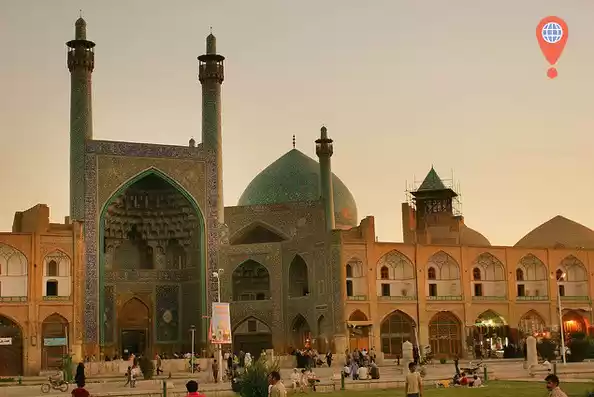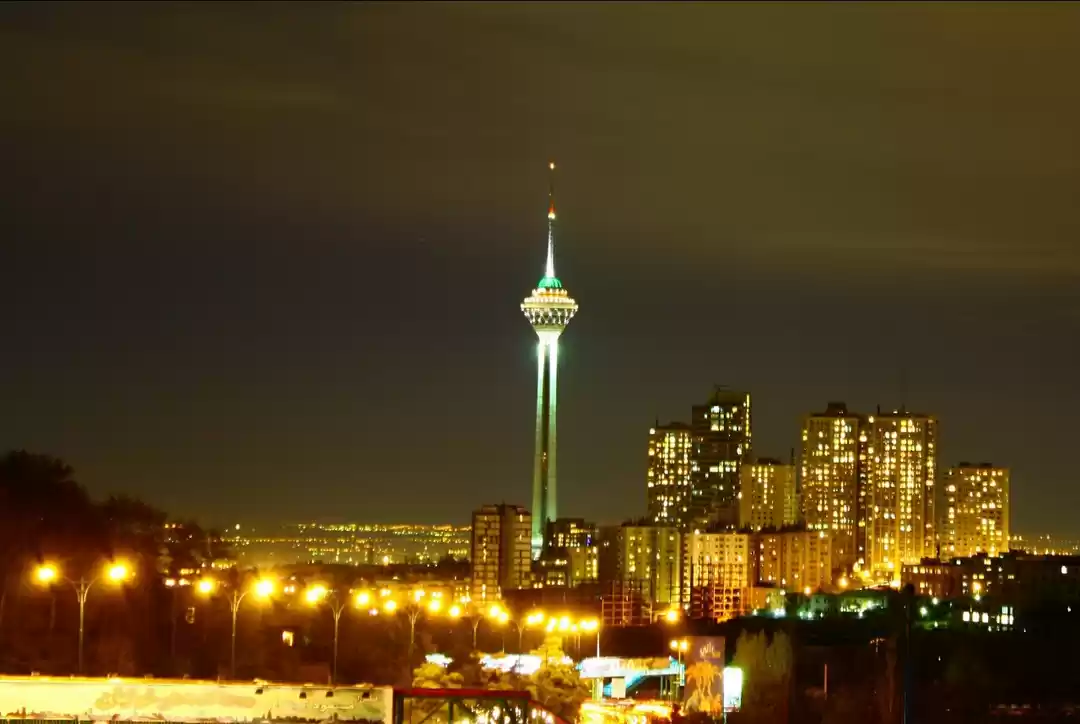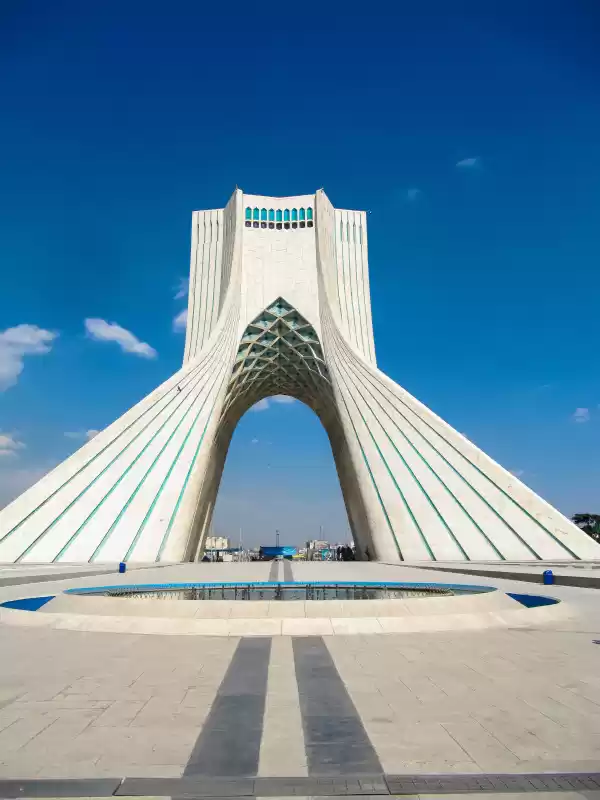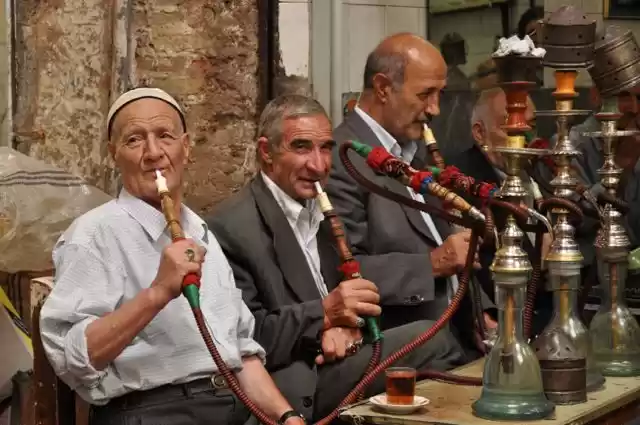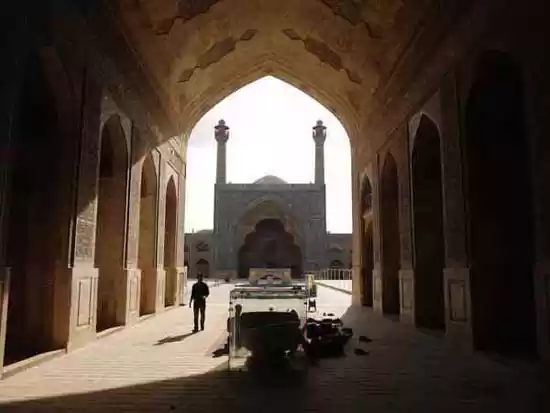Iran Tourism and Travel Guide
Iran (/aɪˈræn/ or /ɪˈrɑːn/; Persian: Irān – ایران [ʔiːˈɾɒn]), also known as Persia (/ˈpɜrʒə/ or /ˈpɜrʃə/), officially the Islamic Republic of Iran (جمهوری اسلامی ایران – Jomhuri ye Eslāmi ye Irān [d͡ʒomhuːˌɾije eslɒːˌmije ʔiːˈɾɒn]), is a country in Western Asia. It is bordered to the northwest by Armenia, the de facto Nagorno-Karabakh, and Azerbaijan; with Kazakhstan and Russia across the Caspian Sea; to the northeast by Turkmenistan; to the east by Afghanistan and Pakistan; to the south by the Persian Gulf and the Gulf of Oman; and to the west by Turkey and Iraq. Comprising a land area of 1,648,195 km2 (636,372 sq mi), it is the second-largest country in the Middle East and the 18th-largest in the world. With 78.4 million inhabitants, Iran is the world's 17th-most-populous country. It is the only country that has both a Caspian Sea and an Indian Ocean coastline. Iran has long been of geostrategic importance because of its central location in Eurasia and Western Asia, and its proximity to the Strait of Hormuz.Iran is home to one of the world's oldest civilizations, beginning with the formation of the Proto-Elamite and Elamite kingdoms in 3200–2800 BC. The Iranian Medes unified the area into the first of many empires in 625 BC, after which it became the dominant cultural and political power in the region. Iran reached the pinnacle of its power during the Achaemenid Empire founded by Cyrus the Great in 550 BC, which at its greatest extent comprised major portions of the ancient world, stretching from parts of the Balkans (Thrace-Macedonia, Bulgaria-Paeonia) and Eastern Europe proper in the west, to the Indus Valley in the east, making it the largest empire the world had yet seen. The empire collapsed in 330 BC following the conquests of Alexander the Great. The Parthian Empire emerged from the ashes and was succeeded by the Sassanid Dynasty in 224 AD, under which Iran again became one of the leading powers in the world, along with the Roman-Byzantine Empire, for a period of more than four centuries.In 633 AD, Rashidun Muslims invaded Iran and conquered it by 651 AD, largely replacing the indigenous faiths of Manichaeism and Zoroastrianism. Iran became a major contributor to the Islamic Golden Age, producing many influential scientists, scholars, artists, and thinkers. Establishment of the Safavid Dynasty in 1501, which promoted Twelver Shia Islam as the official religion, marked one of the most important turning points in Iranian and Muslim history. Starting in 1736 under Nader Shah, Iran reached its greatest territorial extent since the Sassanid Empire, briefly possessing what was arguably the most powerful empire at the time. During the 19th century, Iran irrevocably lost swaths of its territories in the Caucasus which made part of the concept of Iran for centuries, to neighboring Imperial Russia. Popular unrest culminated in the Persian Constitutional Revolution of 1906, which established a constitutional monarchy and the country's first parliament. Following a coup d'état instigated by the U.K. and the U.S. in 1953, Iran gradually became close allies with the United States and the rest of the West, remained secular, but grew increasingly autocratic. Growing dissent against foreign influence and political repression culminated in the 1979 Revolution, which led to the establishment of an Islamic republic on 1 April 1979.Tehran is the country's capital and largest city, as well as its leading cultural and economic center. Iran is a major regional and middle power, exerting considerable influence in international energy security and the world economy through its large reserves of fossil fuels, which include the largest natural gas supply in the world and the fourth-largest proven oil reserves. Iran's rich cultural legacy is reflected in part by its 19 UNESCO World Heritage Sites, the fourth-largest number in Asia and 12th-largest in the world.Iran is a founding member of the UN, ECO, NAM, OIC, and OPEC. Its political system is based on the 1979 Constitution which combines elements of a parliamentary democracy with a theocracy governed by Islamic jurists under the concept of a Supreme Leadership. A multicultural country comprising numerous ethnic and linguistic groups, most inhabitants are officially Shia, and Persian is the official language.

